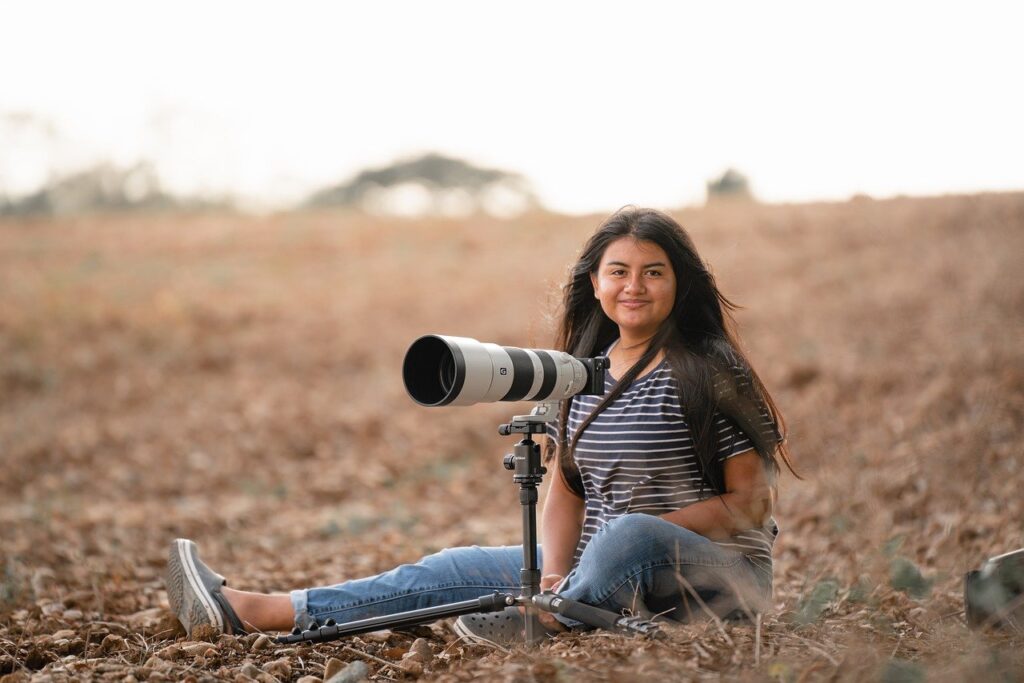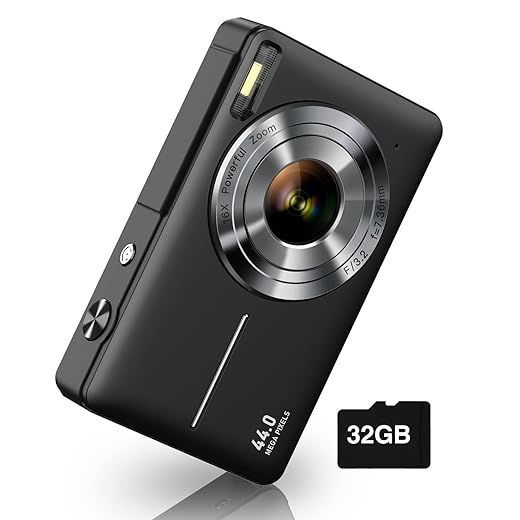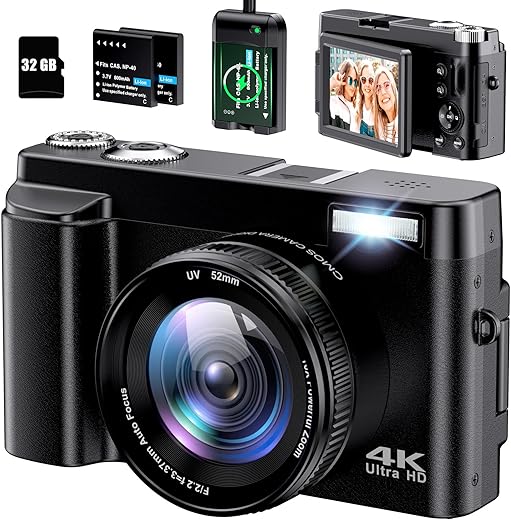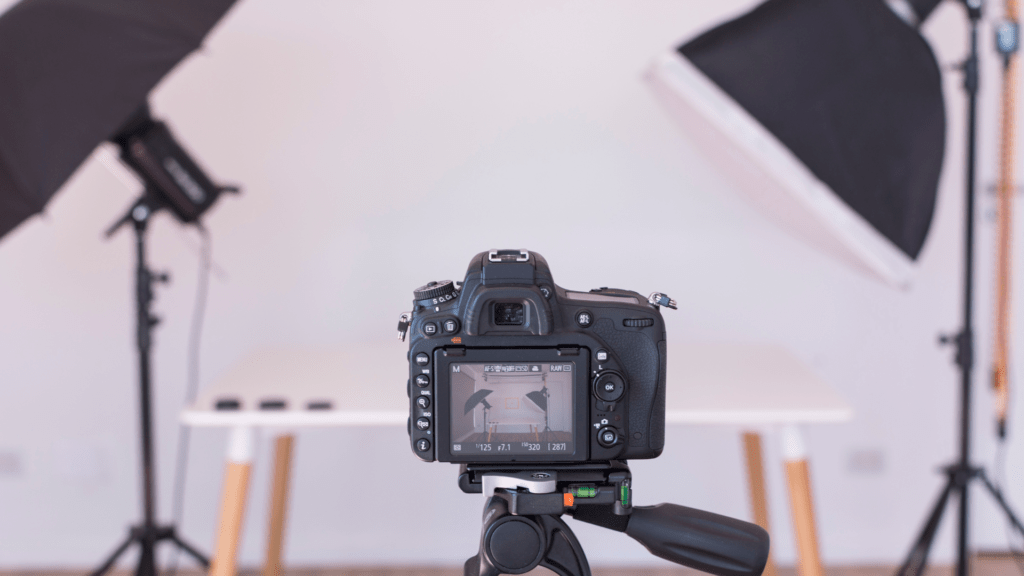This guide offers a straightforward, step-by-step approach for beginners looking to utilize their new compact point-and-shoot camera effectively. It emphasizes the user-friendly nature of these devices, making photography accessible without requiring extensive technical skills. By following the outlined steps, new users will learn how to navigate their camera settings, understand key features, and implement basic photography techniques to start capturing high-quality images immediately. Whether for casual use or travel, this guide will help users feel confident in their new photography journey.
Guide to Using a Point-and-Shoot Digital Camera
Unboxing Your Camera
Carefully lift the camera out of the packaging, ensuring you grip it securely to avoid any accidental drops. Inspect the box for any additional compartments or protective materials that may contain accessories. Confirm that all included items are present, including the battery, charger, lens caps, and user manual. If any components are missing, report this to the retailer or manufacturer immediately.
Examine the camera body closely. Take note of the various buttons and dials, familiarizing yourself with their functions. Press each button gently to understand their responsiveness while keeping the camera angled so you can easily view the LCD screen. This initial exploration will not only help you feel more comfortable with your new device, but also prepare you for more advanced features as you begin to take photos.
Charging the Battery
Locate the battery charger and plug it into a suitable power source, ensuring the outlet is functional. Insert the camera battery into the charger, making sure it is seated correctly in the designated compartment. Check that the charging light activates to indicate that the battery is receiving power. Allow the battery to charge fully, which may take several hours depending on the model. Do not remove the battery until the charging indicator shows it is complete, ensuring optimal performance when using your camera.
Inserting the Battery and Memory Card
Insert the charged battery into the camera by locating the battery compartment, usually found on the bottom or side of the device. Open the compartment cover and check the orientation markings inside. Align the battery according to these markings, ensuring that the metal contacts are positioned correctly, then gently push the battery down until it locks securely in place.
Place the memory card into its designated slot, which is often located near the battery compartment. Ensure you identify the correct orientation for the card; it should align with the diagram, typically found near the slot. Press the card firmly into the slot until you hear a click, indicating that it is securely inserted and ready for use.
Powering On the Camera
Locate the power button on your camera, usually positioned on the top or side of the device. Press the button firmly to turn on the camera. Observe as the lens extends, a clear indication that the camera is powering up. As you see the display activate, take a moment to familiarize yourself with the startup screen that appears.
Notice various menu options and icons displayed on the screen. Each icon serves a different function, such as adjusting settings or reviewing images. Familiarize yourself with the layout and navigation to optimize your experience. Use the directional buttons or touchscreen controls, if available, to explore the various settings and features your camera offers.
Setting the Date and Time
Access the settings menu on your camera by locating the “Menu” button, usually found on the back or side of the device. Navigate through the options using the directional keys or touch screen until you find the “Settings” or “Setup” section. Select this option, and look for “Date and Time” settings. Once you enter this section, you will encounter prompts asking you to enter the current date, followed by the time. Utilize the on-screen instructions to adjust the settings accordingly, ensuring that you input the correct format (e.g., month/day/year for the date and 24-hour format for the time).
Confirm your selections by pressing the “OK” or “Save” button, after which your camera will typically display a success notification. For instance, if today is October 5, 2023, input the date as “10/05/2023” and set the time to your local hour, such as “14:30” for 2:30 PM. This is essential for organizing your photos chronologically, facilitating easy searches later on. If you travel across different time zones, make sure to repeat these steps upon reaching your destination to keep your timestamps accurate.
Taking Your First Photo
Select a shooting mode on your camera, which is usually indicated by a dial or a menu option. Familiarize yourself with the different modes available, such as portrait, landscape, or manual, to choose one that suits your photography needs. Once you have selected the appropriate mode, look through the viewfinder or use the LCD screen to frame your shot. Ensure that your subject is well-positioned within the frame, taking note of the background and any potential distractions.
Press the shutter button gently to capture your first photo. After taking the shot, review the image on your display. Check for proper lighting, focus, and composition to confirm it turned out well. If you’re not satisfied, feel free to make adjustments and retake your photo until it meets your expectations.
Mastering Your Camera Basics
In conclusion, embarking on your photography journey with a new compact point-and-shoot camera can be an incredibly rewarding experience. By following the steps outlined in this guide, you’ve not only set up your camera but also gained the confidence to start capturing life’s memorable moments. Remember, practice is key, so don’t hesitate to experiment with different settings and subjects. Embrace your creativity, and enjoy the process of discovering what your camera can do. Happy shooting!
Essential Gear List
Essential Camera Hacks
Mastering Your Compact Camera: Essential Tips and Techniques
- Understand the Basics: Familiarize yourself with your camera’s features and controls. Read the manual to know what each button does and explore settings such as ISO, aperture, and shutter speed
- Use Auto Mode: Start shooting in Auto mode, which adjusts settings automatically, allowing you to focus on composition rather than technical details. This is ideal for beginners as you learn how to frame your shots
- Experiment with Different Settings: Once comfortable, try experimenting with different shooting modes like portrait or landscape. These settings adjust the camera’s focus and exposure for specific types of photos, helping you understand how each works
- Practice Composition Techniques: Learn and practice basic composition techniques such as the rule of thirds, leading lines, and framing. These principles will improve your photography and make your images more visually appealing
- Review and Reflect: After taking photos, review them to identify what worked and what didn’t. This reflection will help you understand your progress and areas for improvement
Your Guide to Compact Point-and-Shoot Camera Essentials
Compact point-and-shoot cameras often come with several limitations regarding manual settings. Firstly, many models lack full manual control over exposure settings such as aperture, shutter speed, and ISO, which constrains my ability to adjust settings according to specific lighting conditions or creative intentions.
Additionally, the range of available settings is typically limited to pre-programmed modes and basic adjustments, meaning I cannot fine-tune my shots as I would with a DSLR or mirrorless camera. This restriction may impact my ability to achieve certain effects, such as shallow depth of field or motion blur.
Furthermore, even when manual settings are available, the user interface on compact cameras can be less intuitive, leading to challenges in making quick adjustments. Overall, while these cameras are convenient for casual photography, they do not offer the flexibility and creative control found in more advanced camera systems.
There are several advantages to using a compact point-and-shoot camera over a smartphone for photography.
Firstly, image quality is often superior in compact cameras due to their larger sensors and dedicated optics. This allows for better low-light performance, reduced noise, and overall clearer images with greater detail.
Secondly, compact cameras generally offer optical zoom capabilities that exceed the digital zoom often found in smartphones. This enables me to capture distant subjects without losing quality, as the lens can physically magnify the image rather than relying on cropping and enlarging.
Thirdly, manual controls are more accessible in compact point-and-shoot cameras. Many models allow me to adjust settings such as aperture, shutter speed, and ISO, which can be crucial for achieving specific artistic effects and improving overall exposure.
Additionally, compact cameras often come equipped with built-in stabilization technology that can help reduce blur from camera shake, especially important in low-light conditions or when using zoom.
Lastly, using a compact camera can also enhance my focus and engagement with photography as it provides a dedicated tool for the purpose of capturing images. This can lead to more thoughtful composition and creativity compared to the convenience of smartphone photography.
In summary, while smartphones have advanced significantly in photography capabilities, the advantages of image quality, optical zoom, manual controls, stabilization, and enhanced creative engagement provided by compact point-and-shoot cameras can greatly benefit dedicated photography enthusiasts.













I’ve always been a DSLR guy, but excited to give this a shot!
Does anyone have experience with video on these cameras?
This article has made things so much clearer. Thanks!
Just got mine and feeling a bit overwhelmed, these pointers really help!
Great tips! Can’t wait to try out my new camera!
Any advice on accessories? Thinking about getting a lens filter.
Love how compact these are! Perfect for traveling.
I’m looking for tips on composition next! Any suggestions?
What settings do you recommend for low light?